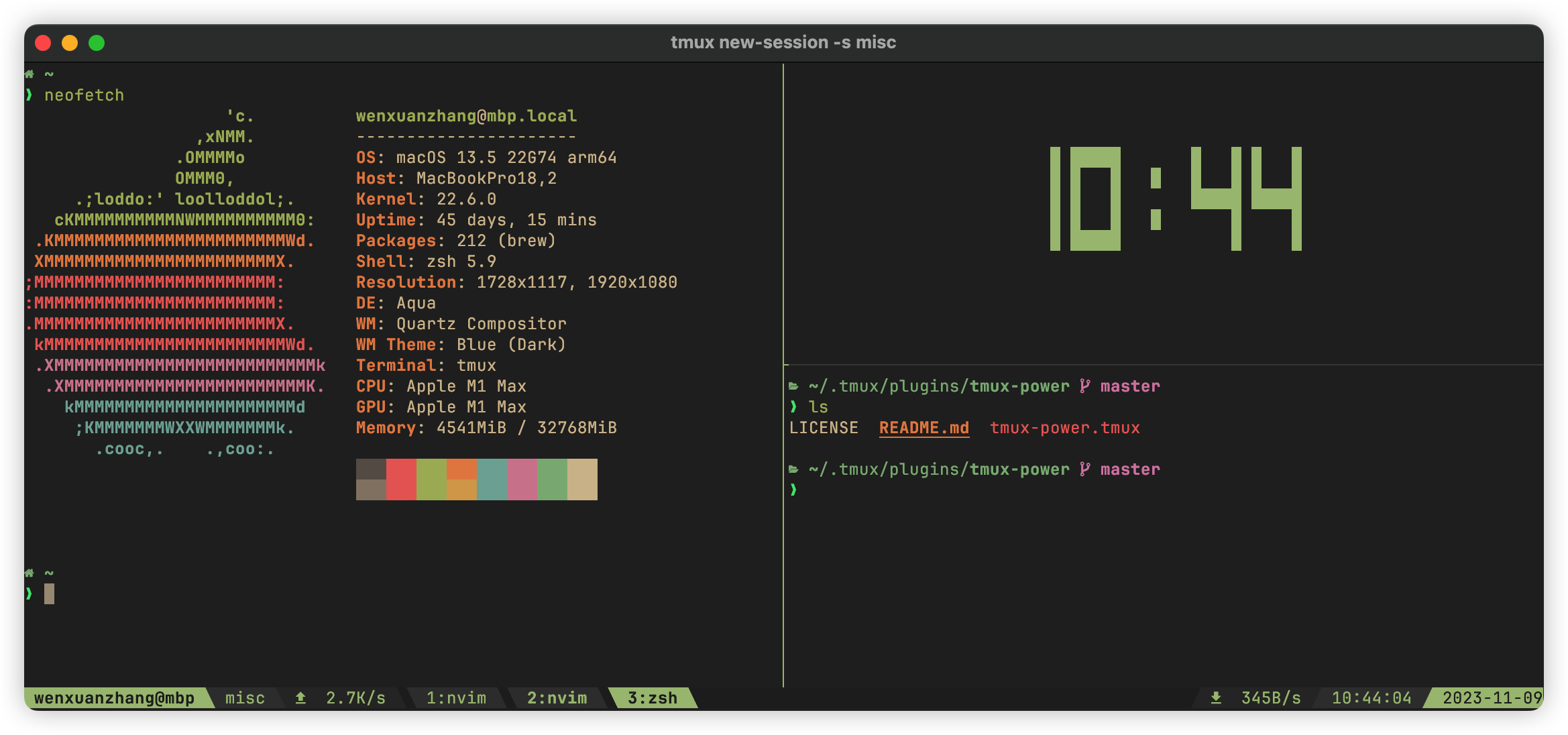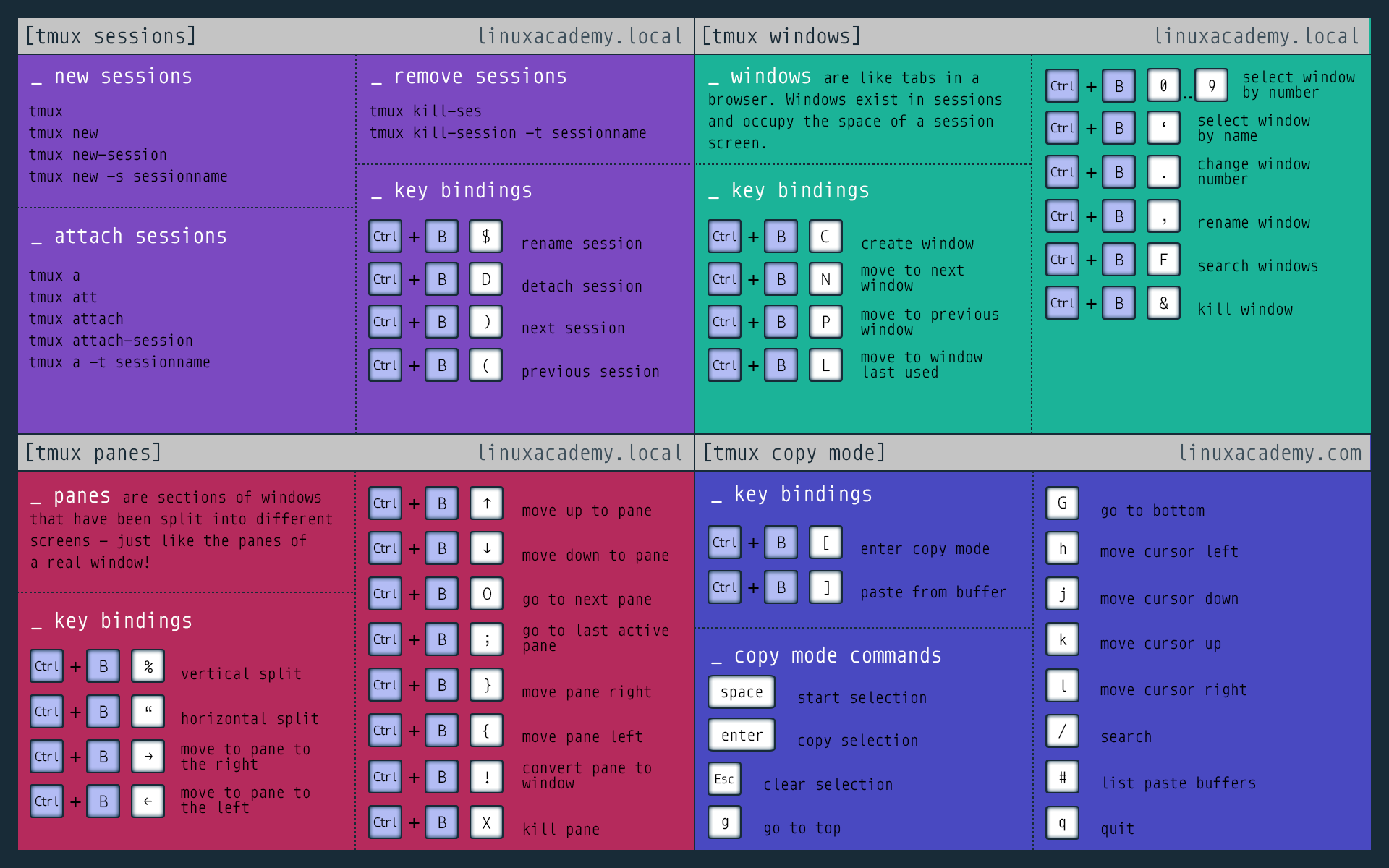The Tmux Tool
Terminal Multiplexer
The first time I encountered tmux was in my systems CS class. My professor was in the middle of an in class demonstration and mentioned that he liked to use this tool in the terminal called tmux because it made work a lot easier. He then proceeded to call tmux to manage his terminal session and run a bunch of code side by side. The whole thing was effortless and just looked like magic to me. I remember thinking to myself, “wow that IS really useful, maybe I should go learn how to use it myself”. Unfortunately I never quite found the time to - it was one of those things where once you put it to the side, you end up never coming back to it. I had forgotten about it until recently when I began to feel frustrated with my own workflow and the hassle of constantly creating new terminal windows and just going in and out of vim and other tools in the command line.

Commands
To start a tmux server with the default session (session 0), just run:
tmux
To detach from your current tmux session the key stroke is Ctrl+B then D (it’s a little awkward so people do configure this). The Ctrl+B key stroke patterns only work inside active tmux sessions. To see all tmux sessions use:
tmux ls
The cool thing about tmux is that when sshing onto a server, the tmux process can be started on the server. With the background process running, even if you disconnect from ssh and then come back and reattach, the process will still be running! You can simply reconnect to the server and reattach to the session with:
tmux attach -t 0
You can abbreviate:
tmux a -t 0
To create a new session and name it:
tmux new -s mysession
To kill a session:
tmux kill-sess -t mysession
Sessions, Windows, and Panes
It’s useful to have the model of session -> window -> pane.
You can have multiple windows in each session (think of windows as tabs in a browser). You can add new windows with Ctrl+B followed by C. Jump to the specified window number with Ctrl+B followed by 2 for window 2 or use Ctrl+B followed by N or P to go forward or back. To kill the window use Ctrl+B then &.
Within each of these windows you can also split the session window into horizontal or vertical panes using Ctrl+B followed by % for horizontal and “ for vertical. Ctrl+B with arrow keys then moves between the panes. Users often recommend enabling mouse support for tmux by modifying the config file so you can resize panes more easily.
One of the shortcuts to be careful of is Ctrl+D which exits (terminates) that tmux session you are in. It’s easy to accidentally hit that key stroke while trying to detach.

Another feature to be aware of is the ability to select text in your windows and then copy and paste them. The extracto plugin is nice because it allows you to fuzzy select and not have to manually select it.
Plugins & Themes
There are also some cool themes and useful plugins out there for configuring the tmux experience:
I would also recommend using the tmux plugin manager here instead of manually downloading them.
My .tmux.conf file looks like this:
# improve colors
set -g default-terminal 'screen-256color'
# prefix as Ctrl+space easier than Ctrl+b
unbind C-b
set-option -g prefix C-Space
bind-key C-Space send-prefix
# start window numbers at 1 to match keyboard order with tmux window order
set -g base-index 1
set-window-option -g pane-base-index 1
# renumber windows sequentially after closing any of them
set -g renumber-windows on
# split panes using | and -
bind | split-window -h
bind - split-window -v
unbind '"'
unbind %
# switch panes using Alt-arrow without prefix
bind -n M-Left select-pane -L
bind -n M-Right select-pane -R
bind -n M-Up select-pane -U
bind -n M-Down select-pane -D
# increase scrollback lines
set -g history-limit 10000
# enable mouse
set -g mouse on
# List of plugins
set -g @plugin 'tmux-plugins/tpm'
set -g @plugin 'tmux-plugins/tmux-sensible'
set -g @plugin 'laktak/extrakto'
set -g @plugin 'wfxr/tmux-power'
# Initialize TMUX plugin manager (keep this line at the very bottom of tmux.conf)
run '~/.tmux/plugins/tpm/tpm'
To reload the current tmux config, run:
tmux source-file ~/.tmux.conf
Note: setting up extrakto requires fzf (this involves downloading with brew, adding a line to .bashrc).
Resources
Some tutorials I consulted:
Enjoy Reading This Article?
Here are some more articles you might like to read next: